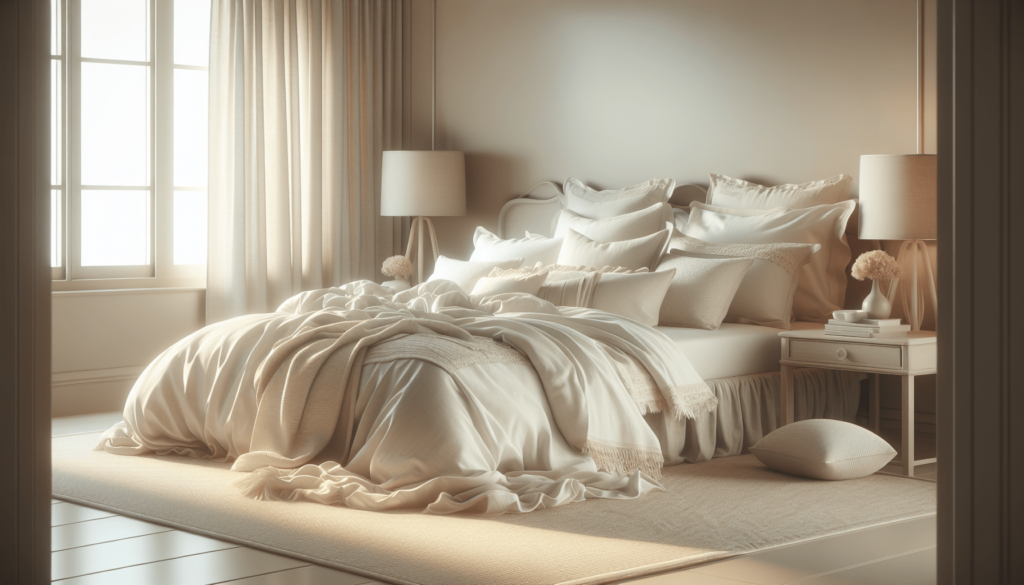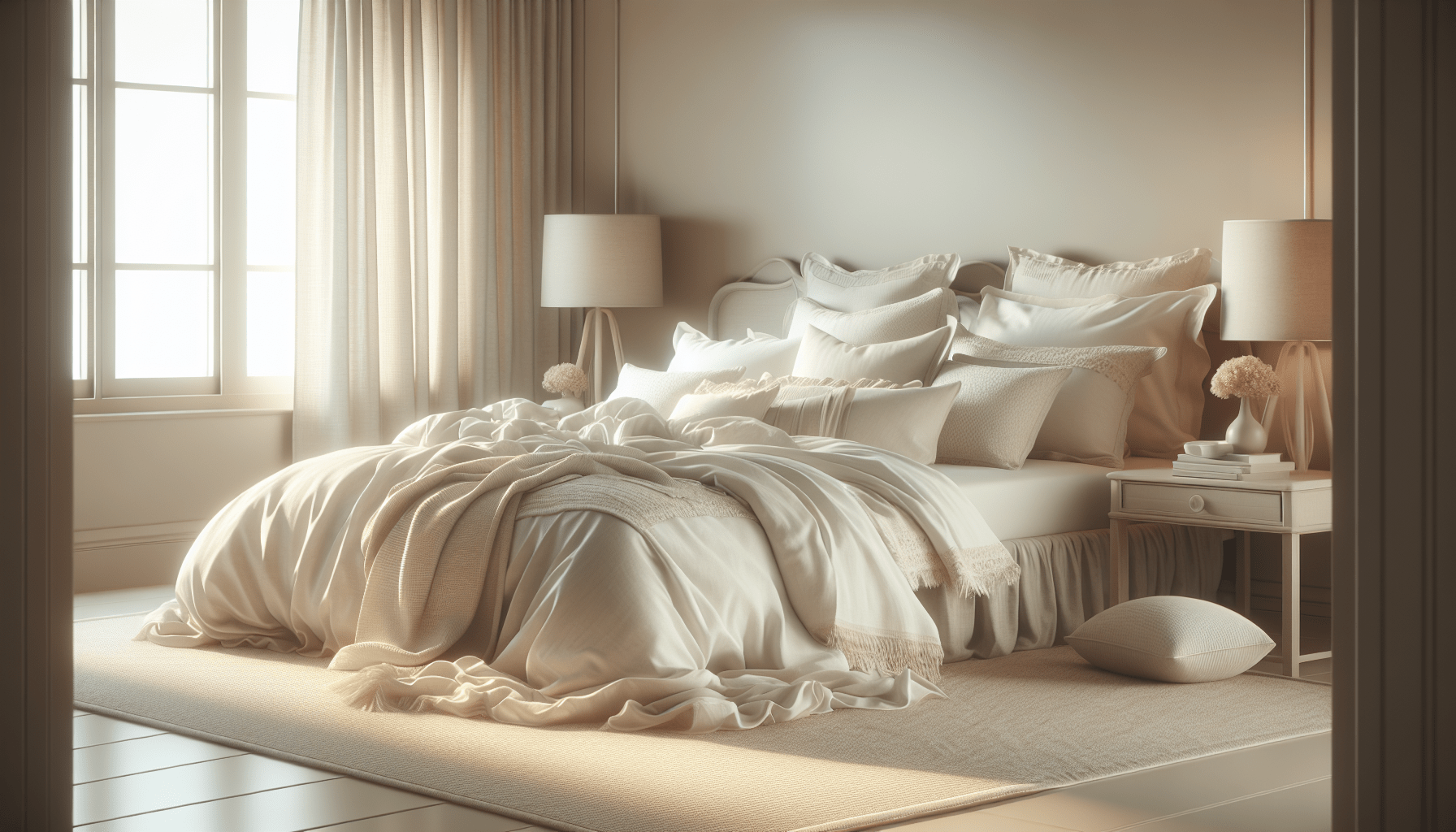Have you been experiencing restless nights or waking up with sneezing fits due to allergies? Bedding can play a significant role in how well you rest, especially if you have sensitivities. This article will guide you through some practical tips for choosing hypoallergenic bedding to ensure you get the allergy relief you need.
Understanding Hypoallergenic Bedding
Hypoallergenic bedding is designed to minimize your exposure to allergens. These materials are crafted to resist common allergens such as dust mites, mold, and pet dander, thereby reducing allergic reactions. But what makes a bedding item truly hypoallergenic?
What Qualifies as Hypoallergenic?
Hypoallergenic products are typically made from materials that discourage the growth and proliferation of allergens. These materials often include tightly woven fabrics, synthetic fibers, and specific types of natural fibers. While not completely allergen-free, they significantly lower the risks of exposure.
Common Allergens in Bedding
The most common allergens found in bedding include:
- Dust mites: These are tiny insects that thrive in warm, humid conditions.
- Pet dander: Shed skin particles from pets often get trapped in bedding.
- Mold: Moisture in the bedding can lead to mold growth.
- Pollen: Pollen grains can easily cling to fabrics.
Key Factors to Consider
When choosing hypoallergenic bedding, it’s important to consider various factors to make an informed decision that suits your specific needs. Here are some points to ponder.
Material
The material of your bedding is the most crucial aspect to consider. Different materials offer different levels of allergen resistance.
Synthetic Fibers
Synthetic fibers like polyester and microfiber are less likely to harbor allergens compared to natural fibers. They are often tightly woven, making it difficult for allergens to penetrate the fabric.
Natural Fibers
Natural fibers such as cotton, silk, and bamboo are also good options. Organic cotton is an excellent hypoallergenic material because it’s free from pesticides and chemicals. Bamboo fabric naturally resists mold and dust mites, offering a good balance between comfort and allergenic resistance.
Thread Count
Thread count refers to the number of threads per square inch of fabric. Higher thread counts generally mean tighter weaves, which can be effective in keeping allergens at bay.
| Thread Count Range | Description |
|---|---|
| 200-400 | Adequate for many hypoallergenic needs |
| 400-600 | Offers better allergen resistance |
| 600+ | May feel softer, but not necessary for allergen control |
Breathability
Breathable fabrics help regulate temperature and moisture, reducing the likelihood of mold and dust mites. Look for materials that wick away moisture and allow for proper air circulation.

Types of Hypoallergenic Bedding
Various types of hypoallergenic bedding can serve different purposes. Below are some common bedding items to consider.
Pillows
Hypoallergenic pillows often use materials like memory foam, latex, or polyester fiberfill, which are less likely to harbor allergens. Look for pillow covers with high thread counts or those made of allergen-resistant fabrics.
Mattress Protectors
A good mattress protector can add an extra layer of defense against allergens. These protectors typically feature tightly woven fabrics and waterproof barriers to prevent allergens from penetrating your mattress.
Bed Sheets
Ideal hypoallergenic bed sheets are made from tightly woven fabrics such as organic cotton or bamboo. These materials help in minimizing exposure to dust mites and other allergens.
Duvets and Comforters
Look for duvets and comforters filled with synthetic fibers or ethically-sourced down that has been treated to remove allergens. Covers should also be made from tightly woven, breathable fabrics.
Blankets
Hypoallergenic blankets often come in materials like microfiber or organic cotton. They can be used in tandem with other hypoallergenic bedding items for a more comprehensive allergen-free environment.
Care and Maintenance
Proper care and maintenance of your hypoallergenic bedding are essential to ensure their effectiveness over time. Here are some tips for keeping your allergy-fighting bedding in top shape.
Regular Washing
Regular washing helps remove accumulated allergens. Use hot water and mild, fragrance-free detergents to kill dust mites and remove allergens effectively.
Drying
Dry your bedding items on a high heat setting to kill any remaining dust mites. Ensure that all items are completely dry before putting them back on your bed to prevent mold growth.
Vacuuming
Vacuum your mattress and surrounding areas regularly to minimize dust and dander. Use a vacuum with a HEPA filter for the best results.
Periodic Replacement
Even the best hypoallergenic bedding will eventually wear out. Pillows should be replaced every 1-2 years, while mattress protectors and bed sheets may last up to 2-3 years with proper care.

Final Thoughts
Choosing the right hypoallergenic bedding can significantly improve your sleep quality and reduce allergy symptoms. By considering factors like material, thread count, and breathability, and by investing in specific hypoallergenic items such as pillows, mattress protectors, and bed sheets, you can create a sleep environment that’s more comfortable and less prone to causing allergic reactions.
Taking care of your hypoallergenic bedding through regular washing, drying, and vacuuming will help maintain their effectiveness over time. Make these simple yet impactful changes to your bedding to experience a noticeable improvement in your sleep quality and overall well-being. Sleep well and breathe easy!
